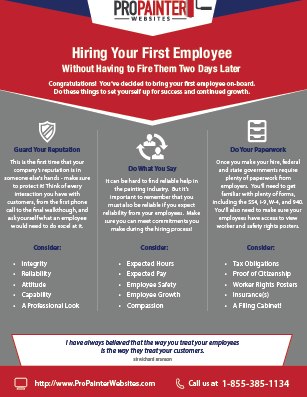Examine The Duty Of Seasonal Factors In The Success Of Industrial External Painting And Reveal The Very Best Times To Secure Long Lasting Outcomes For Your Project
Examine The Duty Of Seasonal Factors In The Success Of Industrial External Painting And Reveal The Very Best Times To Secure Long Lasting Outcomes For Your Project
Blog Article
Team Author-Regan Celik
When you're intending an industrial outside paint job, seasonal aspects can make or damage your outcomes. You'll wish to think about how temperature and moisture impact paint application and drying out times. Picking the best period can ensure your paint sticks properly and lasts longer. However which periods are genuinely the very best for this type of job? Allow's check out the key elements that can impact your task's success.
The Effect of Temperature Level on Paint Application
When you're preparing an industrial outside painting job, the temperature can considerably impact exactly how well the paint adheres and dries.
Preferably, you want to paint when temperatures vary in between 50 ° F and 85 ° F. If it's too chilly, the paint might not treat correctly, causing concerns like peeling or breaking.
On the flip side, if it's also hot, the paint can dry out too rapidly, preventing appropriate attachment and causing an uneven coating.
please click the following page must likewise consider the moment of day; early morning or late afternoon offers cooler temperature levels, which can be much more desirable.
Constantly check the supplier's suggestions for the specific paint you're using, as they typically provide guidance on the optimal temperature level range for ideal results.
Moisture and Its Impact on Drying Times
Temperature isn't the only environmental aspect that influences your industrial exterior paint task; moisture plays a substantial function as well. High moisture levels can decrease drying times drastically, influencing the general high quality of your paint work.
When the air is saturated with dampness, the paint takes longer to heal, which can bring about concerns like inadequate attachment and a higher danger of mold development. If you're painting on a specifically humid day, be gotten ready for prolonged delay times in between coats.
It's essential to keep an eye on local climate condition and plan as necessary. Ideally, go for humidity degrees between 40% and 70% for optimal drying.
Keeping straight line interiors consider mind ensures your task remains on track and supplies a long lasting finish.
Best Seasons for Commercial Outside Painting Projects
What's the very best season for your commercial outside painting projects?
Spring and very early autumn are usually your best choices. During these periods, temperature levels are moderate, and humidity levels are frequently lower, producing perfect problems for paint application and drying.
Avoid summertime's intense heat, which can cause paint to dry too rapidly, bring about poor attachment and finish. Likewise, winter's cool temperatures can prevent correct drying and curing, risking the longevity of your paint task.
Aim for days with temperature levels in between 50 ° F and 85 ° F for optimum results. Remember to inspect the neighborhood weather report for rainfall, as damp problems can spoil your task.
Preparation around these variables guarantees your paint project runs smoothly and lasts longer.
Verdict
To conclude, planning your commercial exterior paint tasks around seasonal factors to consider can make a significant distinction in the end result. By scheduling work during the perfect temperatures and humidity levels, you'll make sure better adhesion and drying times. Keep in mind to watch on neighborhood weather prediction and choose the correct time of year-- spring and early loss are your best bets. Taking these actions will help you achieve a resilient and specialist finish that lasts.
